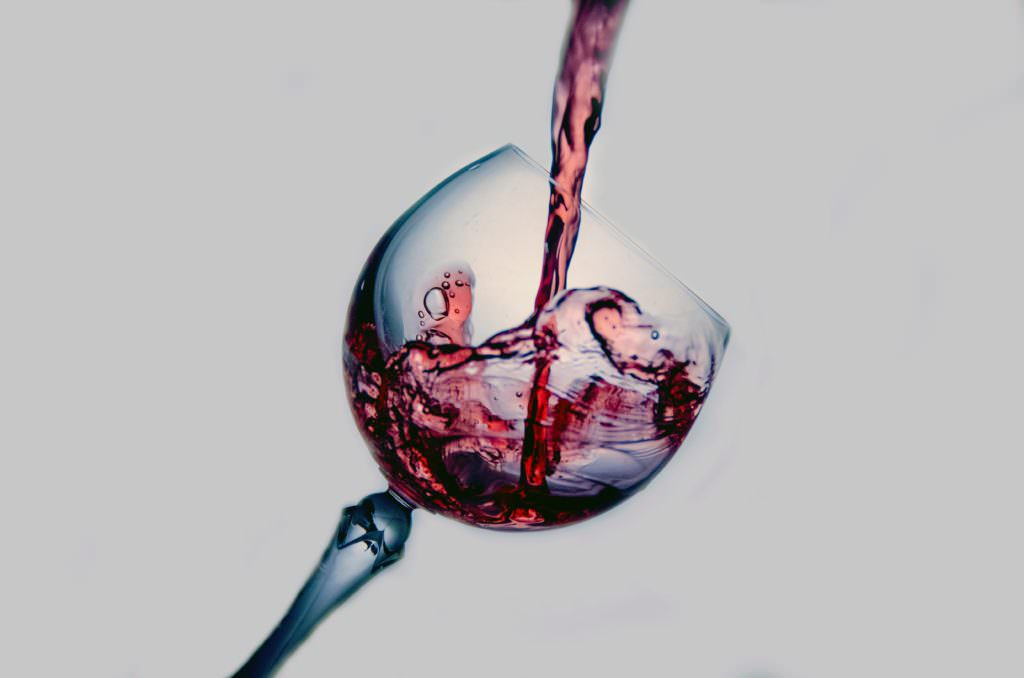Fellow wine lovers, I have good news and bad news. Here’s the bad: Two-thirds of all wine production originates in Europe where grapes receive higher doses of synthetic pesticides than virtually any other type of crop. Since the U.S. is currently first in the world for the total amount of global wine consumption (gulp), this should give you (and me) something to whine about.
Many winemakers feel they can’t rely on nature to establish continuity in their crops, colors, or flavors, so they utilize synthetic pesticides, chemical additives, and sugars. These additives and sweeteners mask flaws such as bacteria and other impurities. This results in processed wine that has been chemically-altered and tastes, well, unnatural. With pesticide exposure linked to cancer, liver damage, and nervous system damage, how can you assure what you’re sipping is safe — let alone sustainable?
Next time you head to the store to grab your favorite bottle of red or white, you may notice a cornucopia of terms. Confusing, overwhelming, and even contradicting labels can make you want to grab a theoretical physicist or microbiologist to decode the bottle. But no worries, you can now understand wine labels. I’ve channeled my inner-cryptologist and decoded the terms for you below.


No pesticides, herbicides, fungicides, insecticides, or chemical fertilizer can be used in the cultivation of organic grapes.
1. Organic
A published Pesticide Action Network (PAN)-Europe report revealed vineyard farmworkers exposed to pesticides had a higher incidence of allergic rhinitis, respiratory problems, cancers, and other health effects. In 2008, PAN Europe tested wines made by world-famous vineyards and discovered that each wine sampled contained an average of at least four pesticides. One bottle actually contained 10 known pesticides! Like organic produce, no pesticides, herbicides, fungicides, insecticides, or chemical fertilizer can be used in the viticulture of organic grapes.
Sulfites are naturally occurring antioxidant and antibacterial compounds in grapes and are used to protect the wine from oxygen. Winemakers often add sulfites to wine as a preservative and to stabilize the wine. A USDA certified organic wine must contain fewer than 10 ppm, or parts per million, of sulfites. Wines “made with organic grapes” (but not certified organic) can contain sulfites up to 100 ppm. (Wondering about the difference between “made with organic grapes” and “certified organic”? Check out the USDA’s organic wine labeling guide.) But any wine over the 10 ppm limit must include the words, “Contains Sulfites” on the label. This requirement is for those with allergies to sulfites, mainly asthmatics.
Note that smaller vintners may use organically grown grapes but you won’t see an organic label on their wine, due to the hefty organic certification fees. Only USDA certified organic wines can carry the seal to guarantee the wine was processed with 100% organically grown ingredients as regulated through the government. My favorite is Bonterra, which is certified organic, zero waste, and a certified B Corporation. This brand offers both an organically farmed and a biodynamically farmed wine collection.

Sustainable wine should be grown using farming practices that are environmentally friendly.
2. Sustainable
There is no formal certification for this term, but it does mean that farming practices are practical and environmentally friendly. The majority of sustainable wines are organic, but you’ll need to check with each winemaker to be sure. The farmers may also incorporate water conservation and renewable energy. One such sustainable winemaker is Fetzer vineyards. With a goal to become net positive by 2030, Fetzer converted its Mendocino County farm to 100% organic in the 1980s. And it was the first vintner to operate on 100% green power in 1999. In addition to water reduction, they were the first winery to achieve TRUE Zero Waste certification in 2014 and became the world’s largest winery to obtain B Corp Certification in 2015. Fetzer incorporates some organic grapes, while their Bonterra brand offers 100% organic and biodynamic wines.

No chemicals or yeast additives are used in the production of a wine with biodynamic certification.
3. Biodynamic
You could call this the Zen of wine. I call it the gold standard. Created by Austrian philosopher, Rudolph Steiner, founder of the Waldorf School, biodynamic farming takes the entire ecosystem into effect by following the cycles of nature. It incorporates not just organic farming, but the astrological and lunar cycles and seasons as a holistic, unified organism. Biodynamic wine assures no chemicals or yeast additives are used. An independent third party certifies biodynamic farms. Demeter is the only certifier for biodynamic farms in America. And the farms must also be certified organic by the USDA’s National Organic Program to qualify. Frey Vineyards, America’s first organic winery, utilizes biodynamic agriculture and is certified by Demeter. Frey wines contain no added sulfites.
4. Natural
This term is trending right now at local hot spots and tasting rooms. Some prefer to call natural wine the hands-off wine. That’s because the less human interference, the better. They use no chemicals or filtering. Natural wine incorporates natural yeasts versus supplemental yeasts and doesn’t add sulfites. Is natural wine organic and biodynamic? With no legal definition for this term, that all depends on who made it.

Do you know which fining agents your favorite winemaker uses in the clarification process?
5. Vegan
While this may sound like a buzzword to you, as a vegan, this label is significant. It has to do with the wine clarification process, called fining, which makes the wine clear and free of haze-producing molecules. The fining agents that many vineyards use may shock and surprise even carnivores. They include casein (a milk protein), albumin (egg whites), gelatin (animal protein), isinglass (fish bladder protein), seashells, and bentonite (clay). Um, no. (Except the last one; I’ve drunk and even bathed in that.) To locate vegan wines, beer, and even liquor, you can visit Barnivore for an extensive list. Remember, not all vegan wines are organic and vice versa. Thankfully, two of my favorite brands, Bonterra (whites only) and Frey, happen to be both.
6. Clean-Crafted
Clean-crafted wines contain just grapes and fewer than 100 ppm of sulfites (often fewer than 50 ppm) compared to mass-produced wine which can, according to the FDA, contain up to 350 ppm of sulfites. These wines do not contain added sugar or sweetener concentrate, ferrocyanide, ammonium phosphate, copper sulfate, Mega-Purple, GMO ingredients, or synthetic pesticides. Scout & Cellar is one brand that sources clean-crafted wines from all around the world. Then, they independently lab test the wines to confirm that there are no synthetic pesticides present.

Clean-crafted wines contain just grapes and fewer than 100 ppm of sulfites.
7. Dry / Ketogenic
The fine peeps at Dry Farm Wines have created the world’s first healthy wine club. The founder, Todd White, has been on a ketogenic diet for years and drinks wine because he produced a wine that is low carb, low alcohol, and contains zero sugar. So, yeah, it’s keto-friendly wine. You’re welcome. They source their wines from small, sustainable farms that use dry farming with no irrigation; they rely on rainfall. All of their wines are organic with no additives. They lab test every wine for purity. Like clean-crafted wines, Dry Farm Wines do not add or remove anything. Their wines are naturally or biodynamically farmed, mycotoxin- and mold-free, contain fewer than 75 ppm of sulfites, and are gluten-free and Paleo-friendly.
Phew! That was a lot. I don’t know about you, but I’m ready for a nice glass organic, vegan, sustainable, biodynamic, natural, clean-crafted, and dry chardonnay — or two!
Feature image by Scott Warman on Unsplash
This article was originally published on February 8, 2019.
The post Healthy Wines: What the Labels Really Mean appeared first on Earth 911.







